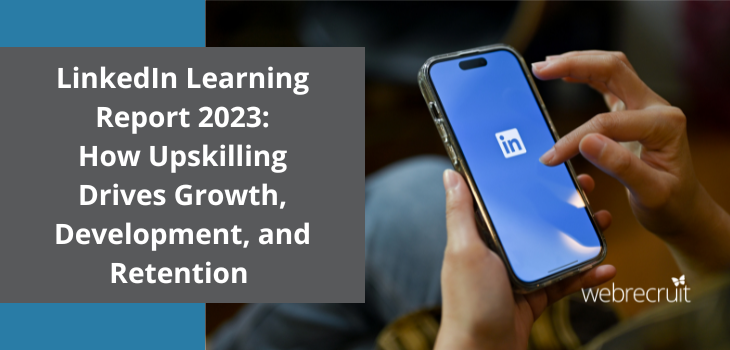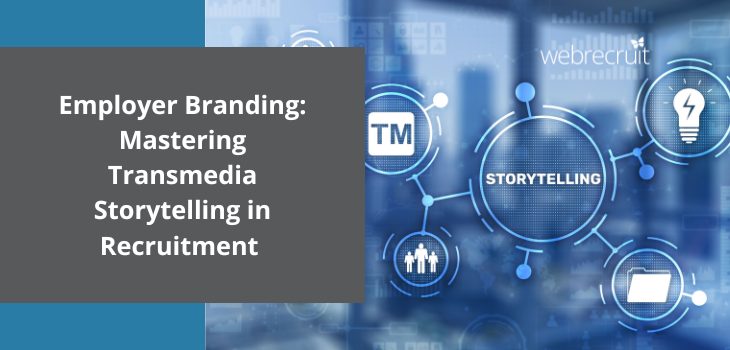The latest LinkedIn Learning Report had a strong focus on how companies can drive growth, development, and retention through upskilling. It’s undeniable that upskilling plays a crucial role in creating a dynamic and future-ready workforce in today’s evolving corporate world. As a hiring manager, your responsibility is not only to fill roles but also to build your organisation’s future.
Let’s explore the report’s key findings and how upskilling is a critical strategy for fostering growth, progress, and employee loyalty.

LinkedIn Learning Report 2023: The Upskilling Imperative
Upskilling is all about equipping your existing team with new or enhanced skills to meet the evolving demands of their roles. It’s a response to the skills gap challenge, highlighted in a LinkedIn Learning Report, which affects both talent retention and acquisition. It’s about turning potential into performance.
Nurturing a Future-ready Workforce
Preparing your team for Industry 4.0 is more than just technical know-how; it’s about holistic skill development. This approach boosts individual career paths and strengthens your company’s talent pool, ensuring readiness for future challenges.
Boosting Productivity and Innovation
Upskilling is a morale booster! It’s proven to enhance productivity and spark innovation, making it a key driver for your company’s growth and development.

Retention Through Continuous Learning
- Creating a Learning Culture: Foster a workplace where learning is part of the DNA. Imagine a company where Fridays are for learning new skills – that’s a culture that attracts and retains talent.
- Mentorship and Coaching: Pairing up your team members with mentors or coaches can dramatically enhance their learning and sense of belonging.
- Career Progression Opportunities: Link upskilling to career advancement. When employees see a clear path to grow, they’re more likely to stay and thrive.
LinkedIn Learning Report 2023: Meeting Modern Workforce Expectations
Today’s workforce, especially Gen Z and Millennials, value learning and development immensely. A robust upskilling strategy is key to keeping them engaged and committed.
- Advanced Digital Literacy: Imagine a tech firm where every employee becomes a whiz at the latest software and cloud-based tools. That’s upskilling in action.
- Soft Skills Development: Workshops on leadership, communication, and emotional intelligence can transform your team, preparing them for bigger roles.
- Customised Learning Paths: Personalised learning paths can lead to higher engagement and job satisfaction, as seen in some of the world’s leading retail giants.
Recognition and Rewards
Beyond upskilling, recognising and rewarding your team is crucial for a motivated workforce.
Examples of Recognition and Rewards
- Skill-based Bonuses: Link skill development to tangible rewards like bonuses or financial incentives.
- Public Acknowledgement: Celebrate learning achievements in newsletters or on social media.
- Enhanced Job Roles: Offer higher-level roles to those who show significant growth through upskilling.

LinkedIn Learning Report 2023: Implementing an Upskilling Growth Strategy
Identifying Skill Gaps
Start by conducting a comprehensive skills audit. For example, a marketing firm might identify a notable deficiency in digital marketing and data analytics skills among their staff. Acknowledging this, they can tailor their upskilling efforts to specifically address these areas, ensuring their team is fully equipped for the digital era.
Developing Tailored Programmes
Creating training programmes that cater to the unique needs of your employees is essential. Consider an IT company that realised its software engineers needed new programming languages. They collaborated with an e-learning provider to develop a bespoke course, covering not just the languages but also vital skills in project management and agile methodologies.
Leveraging Technology
Make use of modern technology to facilitate accessible and engaging learning. A retail chain, for instance, introduced a Learning Management System (LMS) to provide online training modules. They incorporated gamification into the learning process, covering a range of topics from customer service skills to inventory management, making the experience more interactive and enjoyable.
Measuring Impact
It’s crucial to evaluate the effectiveness of your upskilling initiatives post-implementation. A healthcare provider used employee performance metrics and patient satisfaction scores to assess the success of their training programmes. The marked improvements in these areas were a clear indication of the positive impact of their upskilling strategies.
By adopting these approaches and learning from these examples, hiring managers can effectively implement an upskilling strategy that not only boosts employee skills but also drives organisational growth and retention.
Conclusion
As a hiring manager, promoting a culture of continuous learning and development is essential. The latest LinkedIn Learning Report highlights how upskilling can improve your team’s capabilities and make your organisation an attractive, forward-thinking employer. We hope this blog has helped you understand the information presented in the latest report and will enable you to unlock your organisation’s potential!






